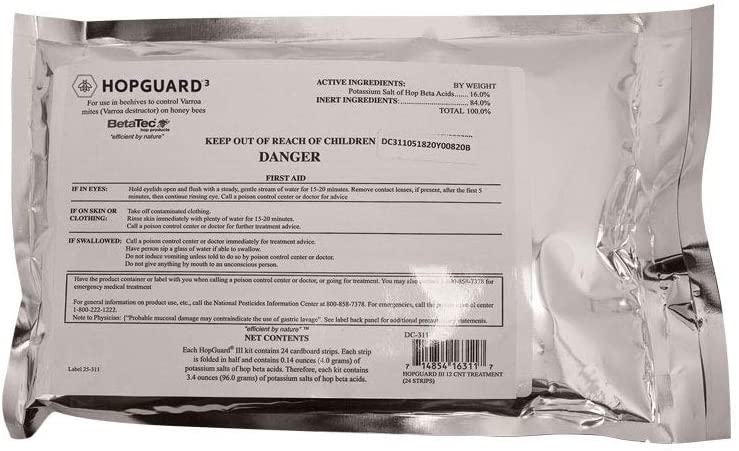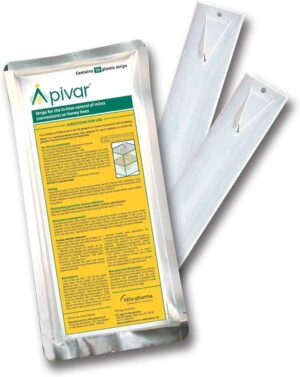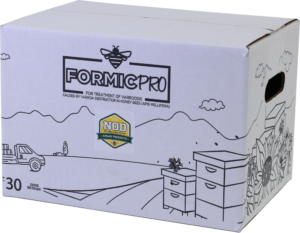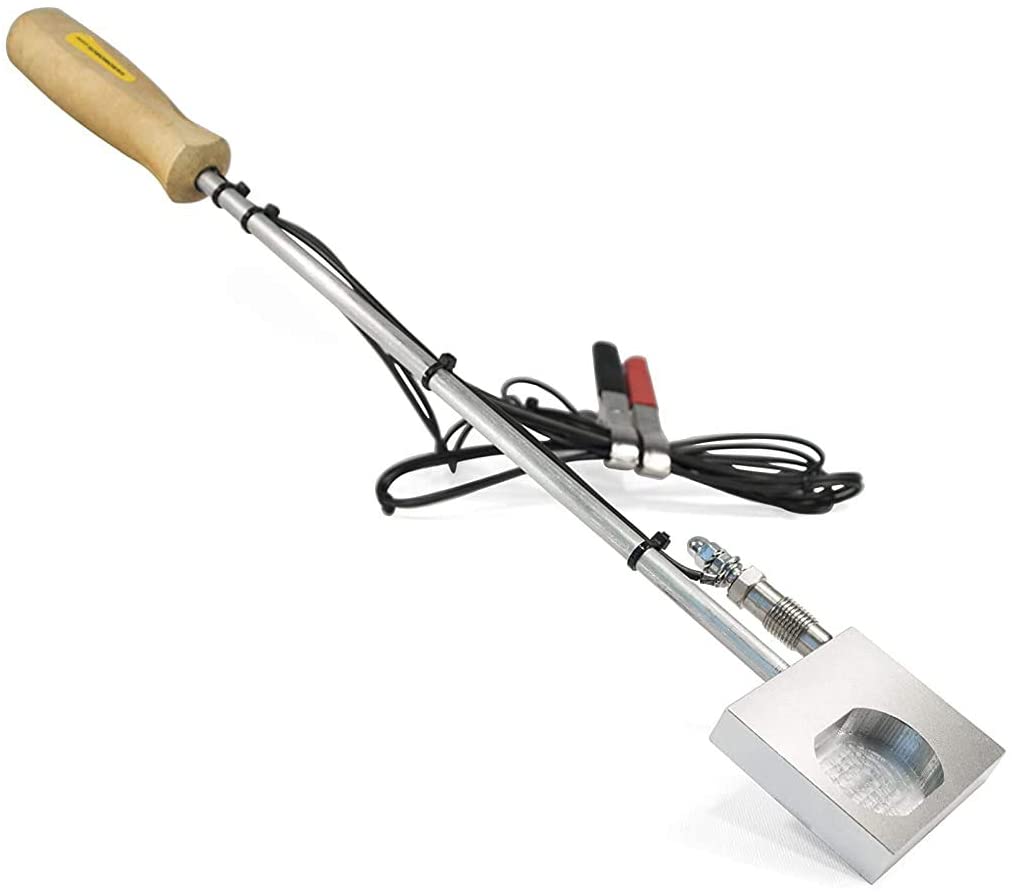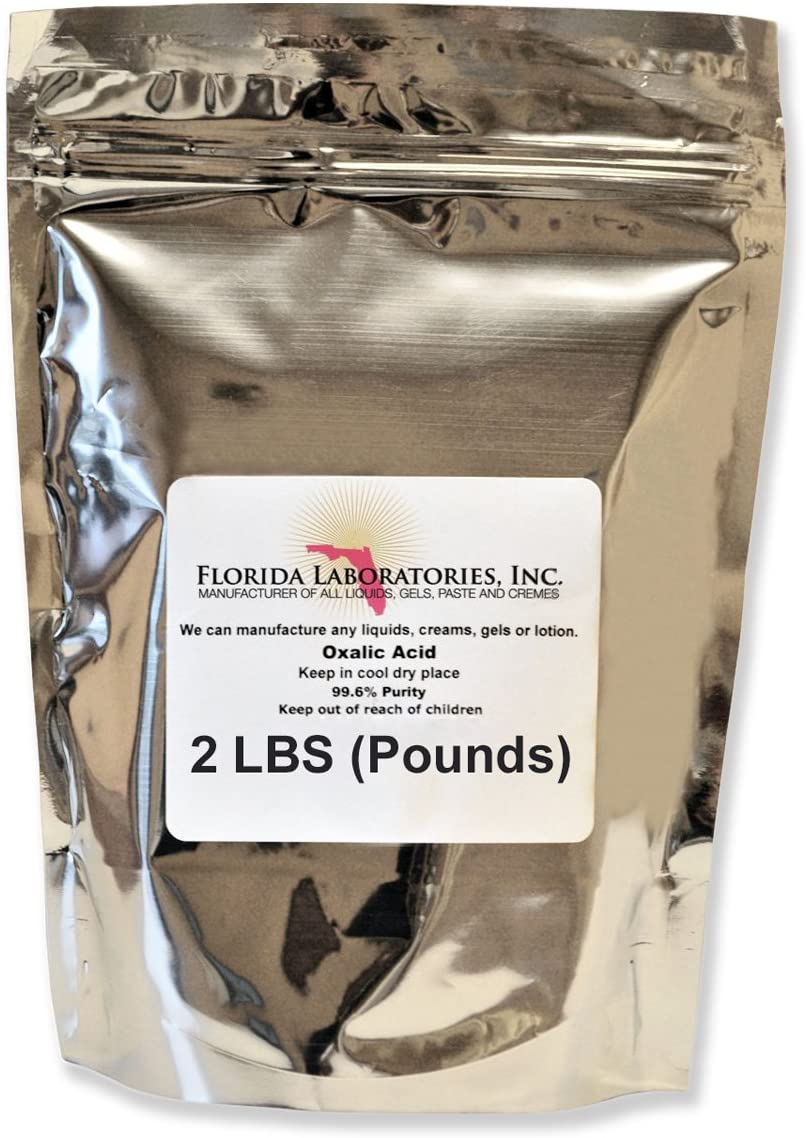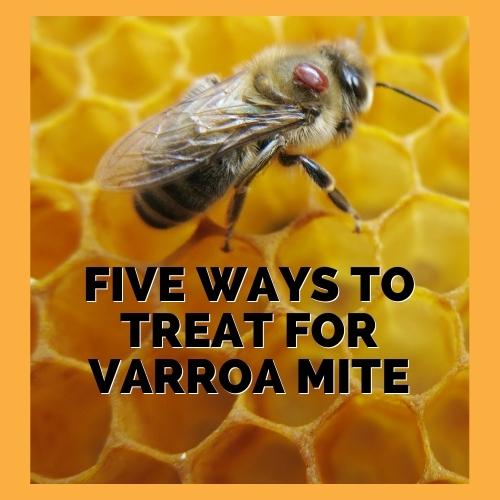
FIVE WAYS TO TREAT VARROA MITE
Here we cover five ways to treat for varroa mite. Varroa mite treatments vary but beekeepers agree that early detection is key, followed by quick action. Click here to learn about varroa mite.
Varroa mite is a tiny parasite of the honey bee. Varroa mites (Varroa destructor or V. destructor) are parasites to the bees. The mites actually feed on the honey bees to survive and reproduce. The varroa mite is one of the biggest threats to western honey bees.
The prescence of varroa on western honey bees became increasingly obvious in Europe in the 60’s. Today, it can be found everywhere honey bees are kept, with the exception of Australia and a few islands.
Treatments vary yet most beekeepers agree that it is a must to prevent varroa mite. We are in the Southeast United States and my mentors and clubs agree that late July is the best time to begin treatment for varroa destructor.
Evidence has shown that some genetic resistance has formed, so treatments will continue to evolve. Here, we focus on the most common treatments in the U.S. Of all the methods, the chemical approach is the most common practice to treat varroa mites.
Want to learn more about the varroa mite and how it threatens honey bee colonies? Click HERE!
Mite Away Quick Strips are a formic acid treatment. They are designed to kill Varroa mites under the brood cap where they reproduce. Strips are placed at the top of the box with the brood in your hive.
Mite Away Quick Strips have a treatment period of seven days. Strips are laid across the tops of the brood frames and they can be used during a honey flow if necessary. A spacer rim is no longer needed for these strips, but you still need to wear the recommended safety equipment for acid. Now available in all states and certified for use in the production of Organic Honey!
Click here to purchase on Amazon.
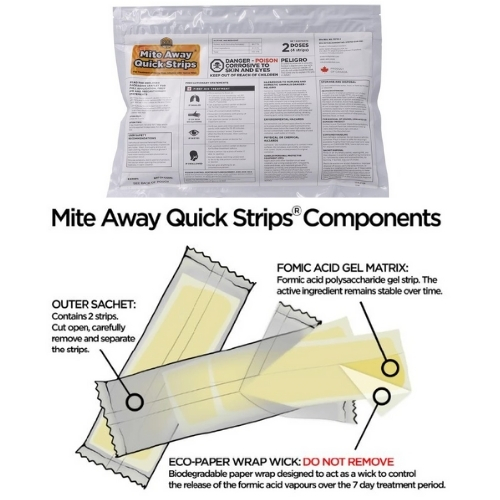
HopGuard 3 is a unique miticide is derived from hop compounds. It provides a safe and easy-to-use alternative to traditional harsh chemicals. HopGuard 3 is acceptable for use in Langstroth, top bar hives, mating nucs, drone mother colonies, nucleus, splits and newly installed packages.
Each HopGuard 3 kit contains either 10 or 24 insert strips that are ready to use. Two strips of HopGuard are used per brood chamber. Strips are placed between brood frames when the temperature is above 50 degrees Fahrenheit.
Click here to purchase on Amazon.
Apivar can be used to treat Varroa mites year round. It is packaged in vacuum-sealed foil pouches. A single application of two strips per brood chamber is sufficient to treat a hive, so you spend less time and effort treating your bees, and there is less disruption of the bees than with many other treatments. Strips are not individually wrapped and must be used within 2 weeks after opening.
Apivar is the only amitraz-based apiary product to treat not just one generation of Varroa mites, but several successive generations, reducing mite populations in the hive by up to 99 percent. Apivar’s controlled-release technology distributes Amitraz over a minimum six-week period, ensuring healthy and productive hives when used as directed.
Click here to purchase on Amazon.
Formic Pro the next generation in formic acid treatments and is used to treat hives with varroa mite, caused by varroa destructor in honey bees. Unlike Mite Away Quick Strips, Formic Pro has a longer shelf life of 24 months and no temperature requirements for storage. Daytime temperatures still must be between 50° F – 84° F (10° C- 29° C) when used.
Strips are laid across the tops of the brood frames. Safe to use during the honey flow! A spacer rim is no longer needed for these strips, but you still need to wear the recommended safety equipment for acid.
There are two treatment options:
- Option One: 2 strips for 14 days.
- Option Two: 1st strip for 10 days remove and replace with 2nd strip for an additional 10 days.
Store indoors in original container out of direct sunlight.
Oxalic acid is an organic compound found naturally within many plants, including vegetables, leafy greens, fruits, nuts, seeds and more. It has been shown to be an effective treatment for Varroa mites and has been used for this purpose in Europe and Canada for many years. It was only approved for use in the US in 2015.
The most popular method of using oxalic acid is oxalic acid vaporization. A small amount of Oxalic Acid crystals are placed on a special wand. The wand is inserted into the hive and heated to vaporize the crystals.
Oxalic acid vaporizer treatment for mites typically uses ½ teaspoon (2 grams) of oxalic acid. Insert into entrance of hive, seal entrance with cloth, and attach copper clamps to battery for 2 minutes with a fully charged 12 volt car battery or deep cycle battery. Remove vaporizer and leave hive sealed for 10 additional minutes. Finally, remove cloth. Use wet cloth to clean. Do not submerge in water. There are several videos on YouTube on how this process works.
As for best time of year to treat, doing your mite counts is the only way to know the level of varroa infestation in your hives.
Click here to purchase the wand on Amazon.
Click here to purchase the oxalic acid on Amazon.

